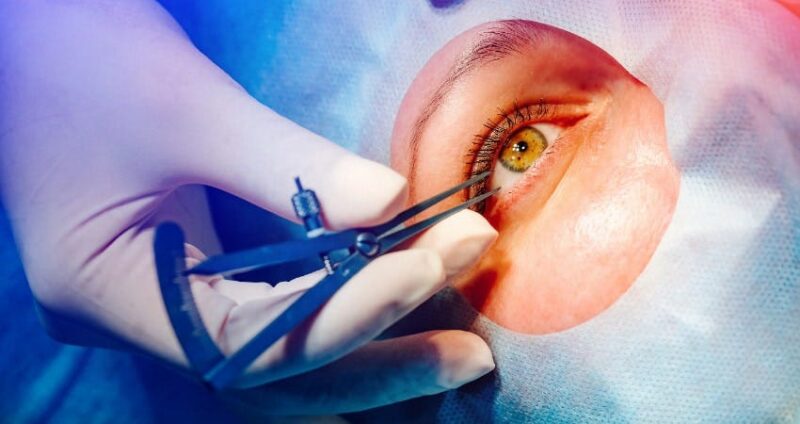The field of ophthalmology has seen remarkable advances over the past few decades, from new diagnostic technologies to innovative surgical techniques. These advancements have propelled the practice of eye care into a new era, enhancing the precision and effectiveness of treatments for various ocular conditions. Cutting-edge diagnostic tools have revolutionized the way eye diseases are detected, enabling earlier and more accurate diagnoses.
Data from clinical trials by contract research organizations (CROs) shows promising results in the field and how emerging technologies are changing the way we see and diagnose eye diseases. As we look ahead, there are several key areas where we can expect to see major breakthroughs and advancements in ophthalmology that will transform how eye diseases and vision problems are treated.
Advancements in Imaging and Diagnostics

New imaging modalities will allow ophthalmologists to see the eye in greater detail than ever before. Optical coherence tomography (OCT) is already widely used, but future iterations will offer higher resolution and additional capabilities like detecting blood flow. Other technologies like ultra-wide field imaging can provide panoramic views of the retina for better evaluation and management of conditions like diabetic retinopathy.
Artificial intelligence is also poised to revolutionize ophthalmic imaging by automating analysis and improving disease detection. Machine learning algorithms can be trained on thousands of OCT scans to identify subtle patterns that may indicate vision-threatening conditions earlier than the human eye. This has the potential to significantly improve clinical outcomes through early intervention.
Novel Drug Delivery Methods
Getting medications to act locally in the eye while minimizing systemic side effects has long been a challenge in ophthalmology. New drug delivery systems aim to overcome this hurdle through slow-release implants, nanoparticles, and more targeted injection methods.
For example, based on the positive evidence from contract research organizations (CROs), researchers are developing contact lenses that can slowly deliver glaucoma medications over time.
Gene and Stem Cell Therapies

Many eye diseases have genetic components, making them well-suited for emerging gene editing techniques like CRISPR. By modifying DNA sequences, we may eventually be able to correct genetic mutations that lead to blindness. Stem cell therapy also holds promise for regenerating damaged retinal cells in age-related macular degeneration or reversing the loss of photoreceptors in retinal diseases.
While still largely experimental and at the stage of clinical trials by Ophthalmology CRO, these cutting-edge treatments could potentially restore vision in cases where no effective options exist today.
Advancing Corneal Transplantation
Penetrating keratoplasty, or full-thickness cornea transplantation, has been the standard of care for many corneal diseases. However, newer techniques like DSEK (Descemet stripping endothelial keratoplasty) and DMEK (Descemet membrane endothelial keratoplasty) are allowing for targeted replacement of only the diseased corneal layers.
This enhances recovery and reduces rejection risk. Moving forward, tissue engineering may also make synthetic corneas a reality by using biocompatible scaffolding and a patient’s own stem cells.
Innovations in Cataract Surgery

Cataract surgery is one of the most common and successful procedures in medicine today. We can expect continued refinements to further improve visual outcomes and safety. One example is advanced femtosecond laser technology for incredible precision in making the necessary surgical incisions. Lens implantation techniques will also progress, with accommodative and multi-focal lenses potentially reducing the need for reading glasses after cataract surgery.
Minimally Invasive Glaucoma Surgeries
Glaucoma treatment is shifting away from traditional trabeculectomy procedures towards minimally invasive glaucoma surgeries (MIGS) like iStent and Hydrus stents. These tiny implants can reduce eye pressure by improving drainage without damaging the conjunctiva or creating a filtration bleb. As novel stent designs emerge, MIGS will keep gaining ground as a first-line glaucoma treatment with lower risk profiles.
Robotic Assisted Surgery
Robotic platforms have allowed for enhanced precision and visualization in fields like urology and gynecology. Ophthalmology is poised to follow suit, with robotic surgery systems approved for anterior segment procedures like cataract extraction. As the technology matures, robotics could enable better outcomes in delicate retina surgeries. With AI integration, automated maneuvers would further minimize errors and shorten learning curves for surgeons.
Conclusion
Ophthalmology has always pioneered cutting-edge technologies like lasers and intraocular lenses. The coming decades will see this trailblazing spirit continue with major leaps forward in imaging, drug delivery, gene therapies, minimally invasive techniques, and robotics.
Driven by both emerging science and the growing global burden of visual disability, the future is undoubtedly bright for vision-saving treatments. While challenges remain in translating novel ideas into clinical practice, the promise of restoring sight worldwide keeps the field marching forward.

